THIS WEEK: Tom King & Jorge Fornés’s Rorschach comes to a conclusion. Was it worth it?
Note: the reviews below contain spoilers. If you want a quick, spoiler-free buy/pass recommendation on the comics in question, check out the bottom of the article for our final verdicts.
Rorschach #12
Writer: Tom King
Artist: Jorge Fornés
Colorist: Dave Stewart
Letterer: Clayton Cowles
Cover Artist: Jorge Fornes
To call any project involving the characters and universe of Alan Moore & Dave Gibbons’s seminal Watchmen “fraught” feels like a bit of an understatement. The raw deal Moore & Gibbons got following the series’ publication is well-trod territory, and like it or not there’s not likely going to be any change to DC’s ownership of the rights to Watchmen any time soon. Passions run deep over Watchmen, though, and regardless of the legalities whenever a new project involving those characters comes out, there’s always an extra hurdle to clear. Does the project have something new to say? And did the project justify itself and its use of that IP?
The final issue of DC’s Rorschach miniseries by Tom King, Jorge Fornés, Dave Stewart, and Clayton Cowles is out in stores today. As only the third comics project to tell new stories set in the Watchmen universe, along with 2012’s Before Watchmen and 2017-2019’s Doomsday Clock, Rorschach must now reckon with all of the aforementioned questions in its own way. Before we get to that, though, let’s talk about Rorschach as its own thing. Does it succeed on its own merits? Is it a well-crafted comic?
When it comes to the artwork, the answer to those questions is undoubtedly “yes.” Fornés and Stewart have done stellar work over the past dozen issues. Rorschach is overall a fairly quiet story, following an unnamed investigator as he meticulously examines the lives of a pair of would-be assassins. Unless you’re reading a Batman comic, detective work is often not the most visually exciting thing to watch, but Fornés and Stewart present the investigation beautifully. Fornés’s storytelling is straight-forward and cinematic, impressive without feeling like it’s trying to be impressive, and Stewart’s naturalistic colors enhance the visual experience well. The use of color in shifting between timelines throughout the series is also well-executed, and lends itself well to multiple reads to really appreciate the craft behind it.
The story, on the other hand, is another matter. As mentioned, the series follows the investigation, and it does so in what feels like a fairly organic, realistic fashion, with all of its tangents, bizarre encounters, and dead ends. In that respect it’s successful, as that’s what detective work is, and from a character perspective it paints a fairly full picture of both Wil Myerson and Laura Cummings, the two would-be assassins. The series doesn’t seem to have any real momentum, though, meandering from point A to point B in the investigation, hitting the same points about Myerson and Cummings, what drew them together and what led them to try to assassinate Turley, over and over again, and at times the overall story feels slight and unfulfilling as a result. Answers about both the investigation and where the series is ultimately headed begin to reveal themselves in issues 10 and 11, and to a large degree they don’t make any sense. The penultimate issue of the series takes place basically entirely in the detective’s head, and only then does it become clear that he’s an unreliable narrator, which calls into question how much of what’s revealed in the issue is even true. Was there a conspiracy or not? Does the truth even matter? It’s hard to tell.
What’s easier to say is that the turn the detective takes, buying into what Myerson and Cummings believed and ultimately fulfilling their mission, seems to come out of left field, and falls flat in the end. The reader knows basically nothing about the investigator – he’s an unnamed cipher with no real personality. His descent into murderous insanity lands with a thud, because the reader doesn’t know how close he was to the edge to begin with. If the character had been given any backstory or distinguishing details perhaps the twist would’ve been more successful. As it is it’s a fascinating experiment, but it doesn’t make for a very fulfilling read.
And now we come to the Watchmen of it all, and the pair of questions posed at the beginning of this review: Does Rorschach have something new to say? I do believe that King, Fornés, and co. set out to say something interesting about our current political and societal moment with this book, but that they didn’t quite get to their mark for the reasons mentioned earlier. If the investigator had been developed as well as Myerson and Cummings were, and if the story hadn’t meandered as much as it did, the series probably would have been more effective.
Did Rorschach justify itself and its use of the Watchmen IP? On this point the answer has to be an unequivocal “no.” Removing the Watchmen elements of the series — the Rorschach iconography, the references to President Redford and the squids — and replacing them with similar non-Watchmen elements would not fundamentally change the story of this series. There’s nothing in this series that makes it a story that definitively could not have been told in a non-Watchmen setting, nor was the story necessarily improved by the inclusion of those Watchmen elements. It’s the most crass form of entertainment: one that leverages recognizable IP to get you in the door and then ultimately has nothing to do with that IP.
From start to finish, Rorschach is a beautiful book to look at, and as a character examination of a pair of disturbed individuals it’s very successful. Unfortunately, some truly baffling storytelling choices and a finale that feels unearned and anticlimactic hold the series back from reaching its full potential.
Final Verdict: Browse.
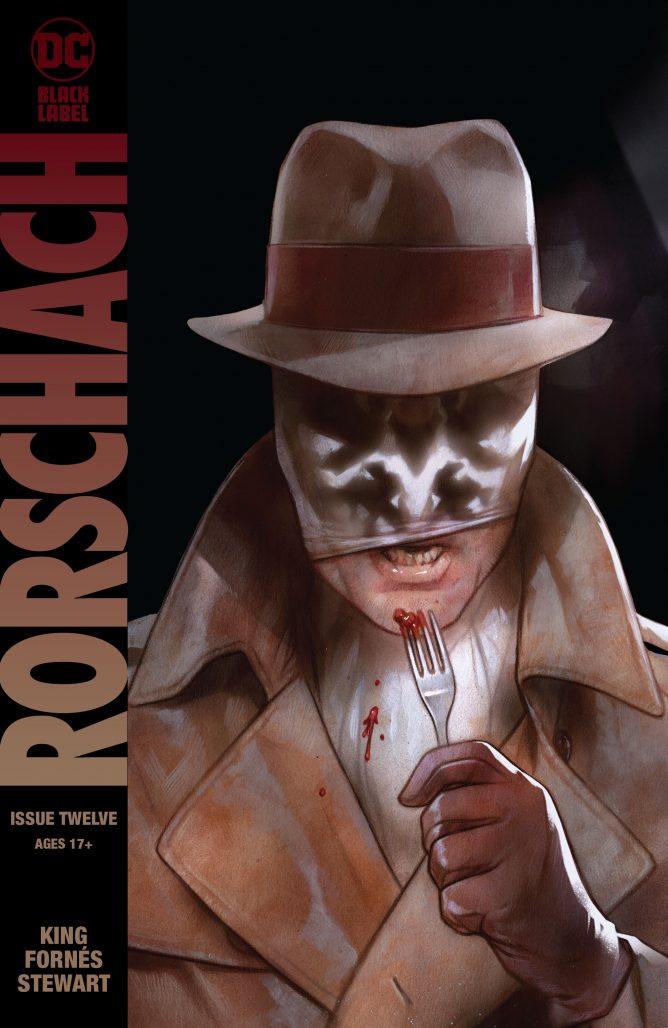
Round-Up
- I Am Batman #1 arrives this week, and John Ridley is joined by artist Olivier Coipel for a proper introduction for Jace Fox as The Next Batman. It’s a stellar first issue that clearly establishes what Jace’s mission for putting on the cape and cowl is, and Coipel’s artwork is excellent as always and a nice fit for the corner of Gotham that the series is exploring. If the #0 issue of this series was a bit of a letdown, this was a really nice course correction.
- Speaking of The Next Batman, Future State: Gotham continues to be a more entertaining series than it has any right to be. The latest issue from Joshua Williamson, Dennis Culver, and Giannis Milonogiannis finds Jason Todd, aka Peacemaker-Red, forced to battle the Jace Fox Batman by new villain Warmonger. Mysteries from earlier in the series are resolved, and new ones are teased, and it’s generally a lot of fun to see the creators cut loose in their own timeline where anything feels possible.
- The other series debut this week is Titans United #1, a sort-of sideways tie-in series to the HBO Max Titans that uses all the characters from the series but in a much brighter, shinier comic book-y way than the show often does. Cavan Scott, Jose Luis, Jonas Trinidade, Rex Lokus, and Carlos M. Mangual put together an entertaining enough comic, albeit not one without some cringeworthy dialogue along the way. The continuity-free nature of the book means it should be fairly accessible for fans of the show, though fans of the comic Titans may wonder how characters like Red Hood and Superboy ended up on the team.
- I was in a mystery mood after finishing Rorschach, so I turned to the other detective-themed DC release for the week as my palate cleanser. The Batman & Scooby-Doo Mysteries #6 tells the tale of a young Bruce Wayne and the A Pup Named Scooby-Doo-era Mystery Inc. studying together under the tutelage of Bruce’s Silver Age mentor, Detective Harvey Harris. Writer Sholly Fisch spins a delightful tale, filled with in-jokes and references to the Pup Named Scooby-Doo series, which landed perfectly for and delighted this reviewer. Scott Jeralds and Carrie Strachan’s artwork is an interesting blending of the APNS-D style with a more Toth-y Super Friends look for Bruce. The whole thing has the visual feel of classic animation, with characters standing out strikingly against the backgrounds and ‘stock poses’ used multiple times throughout the book. A super-fun reading experience that’s rewarding for long-time fans and casual readers alike.
Miss any of our earlier reviews? Check out our full archive!


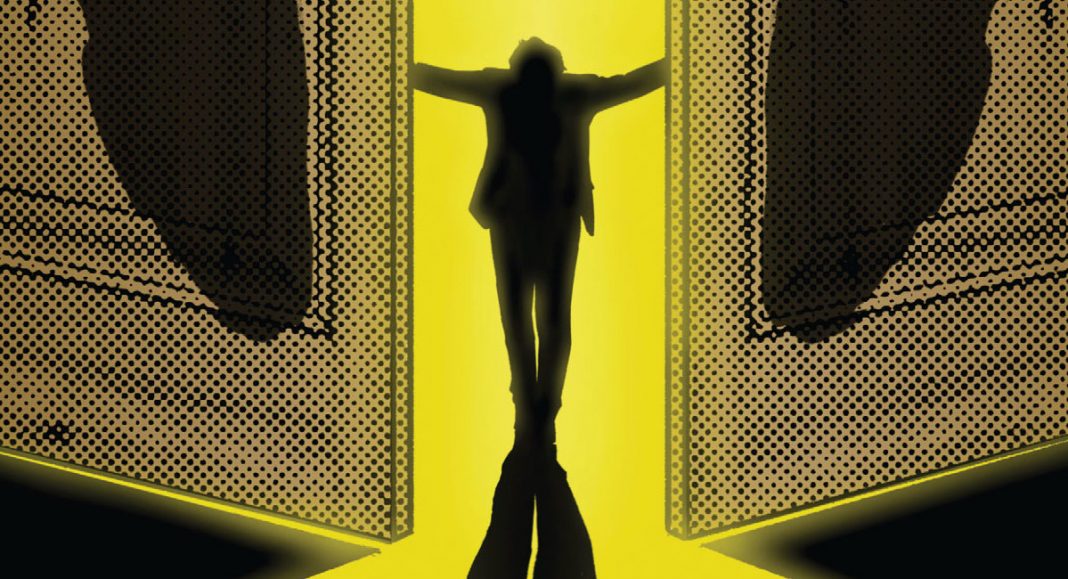
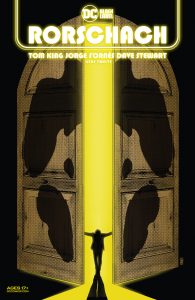
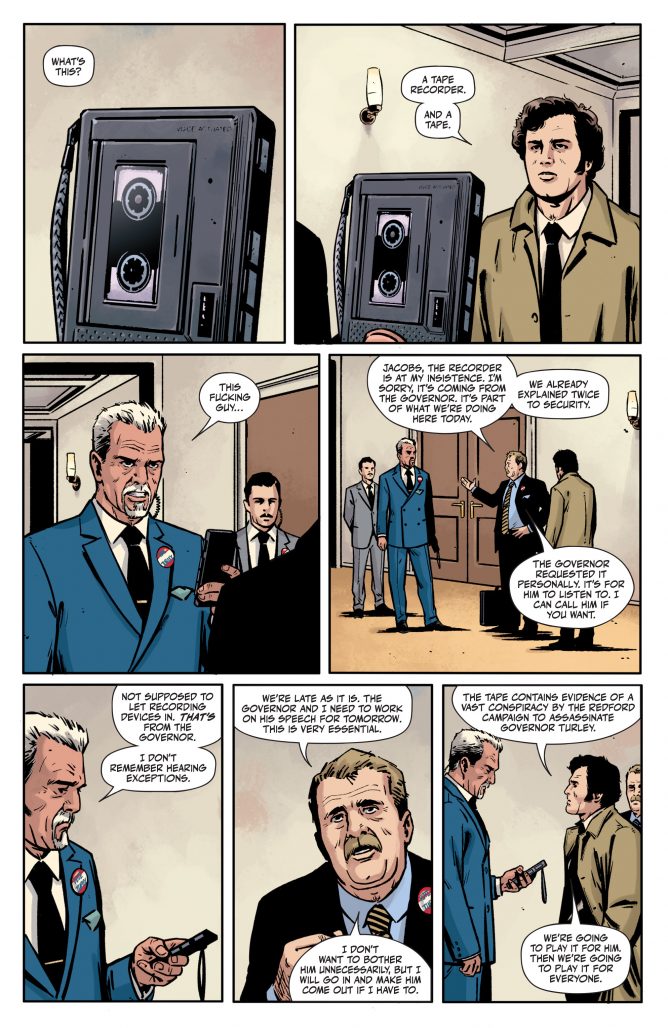
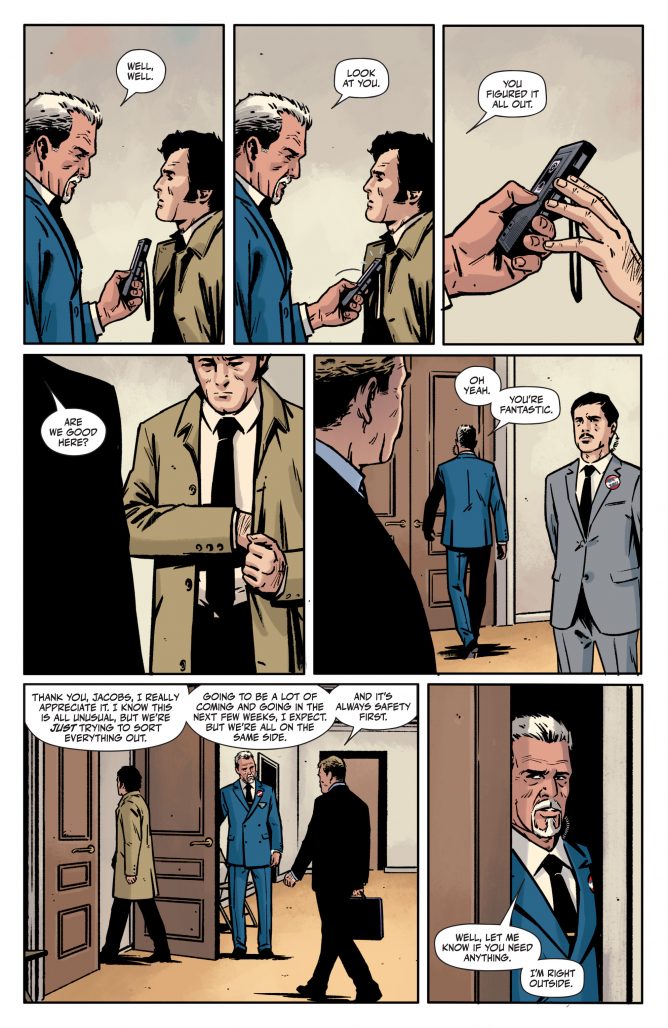
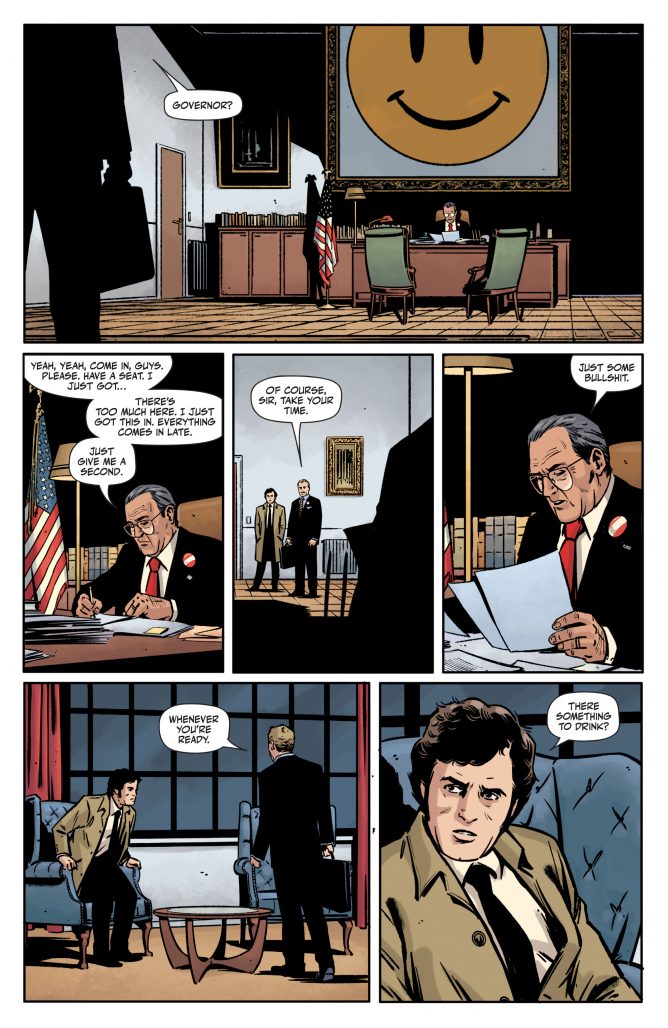
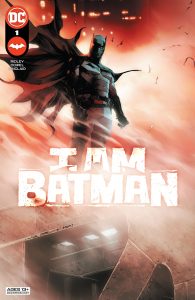
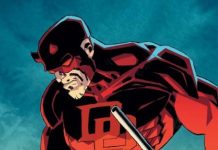
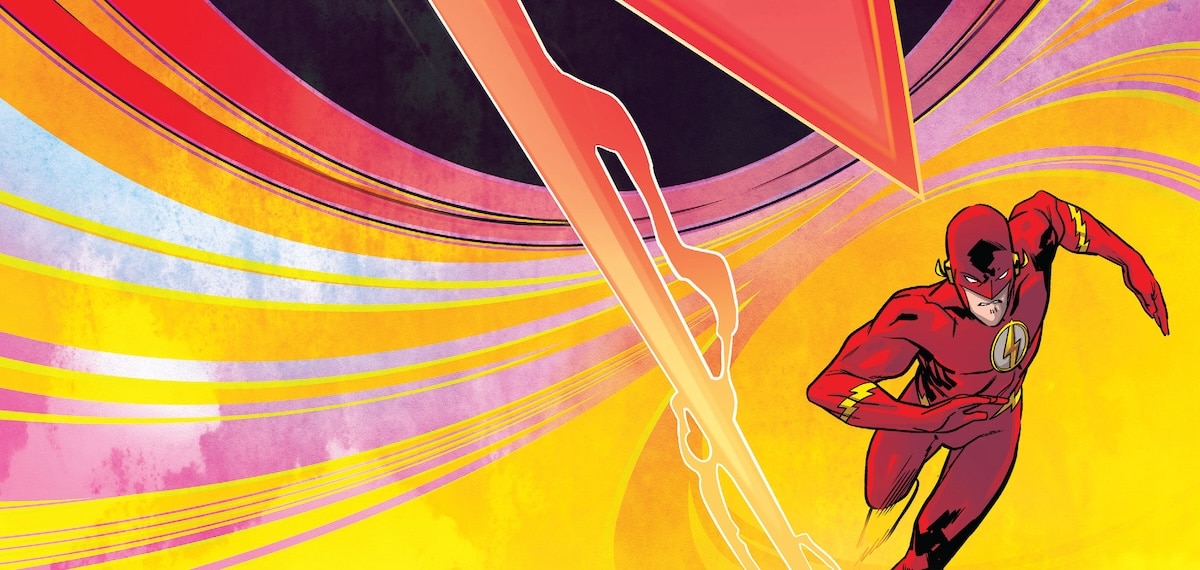





Speaking for myself, I’ve rarely been happier to see the end of a series like I am with Rorschach. Between this and Strange Adventures, I’ve read read more drivel in a comic. Good riddance to both of them.
Bad as it was, though, this weeks booby prize goes to Justice League, with a dull story made worse by Hempel’s inappropriate art. He’s good on a lot of things, but Justice League is not one of them.
Comments are closed.